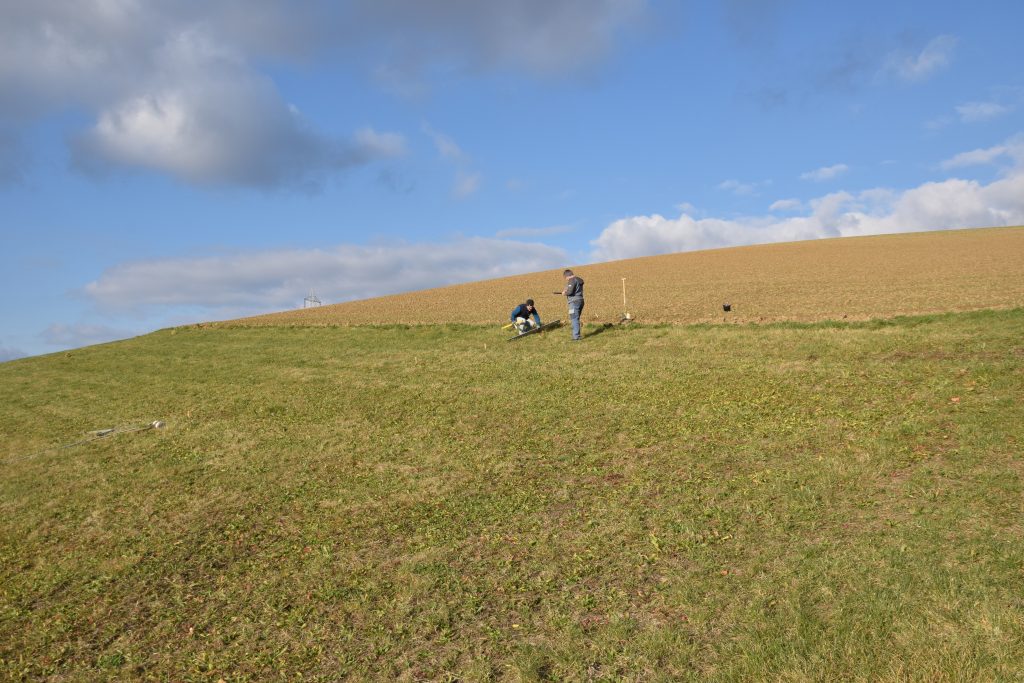In addition to the two sites that were sampled last year, we took further soil core samples at six sites across Western Lower Austria. For the additional sites we used an adapted sampling array, focussing on samples from within the area of concentrated runoff (and erosion) and outside. A convergence of the flow, e.g. due to topography (thalweg), tillage, or other factors, is rather the norm than the exception, causing a concentration of runoff and erosion—coupled with nutrients and other pollutants. With the data from the soil cores, we aim at a better understanding of nutrient retention processes in real-life buffer strip soils and, eventually, improved planning and design recommendations for buffers that are truly effective in protecting surface water from agricultural inputs.






